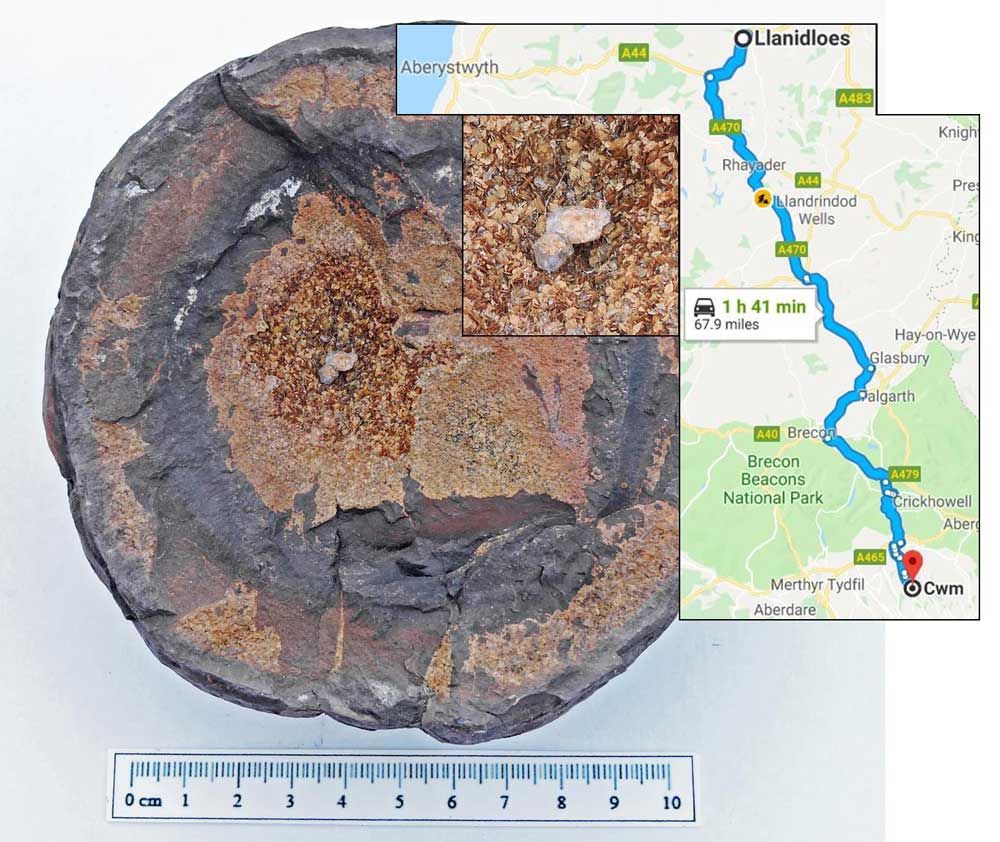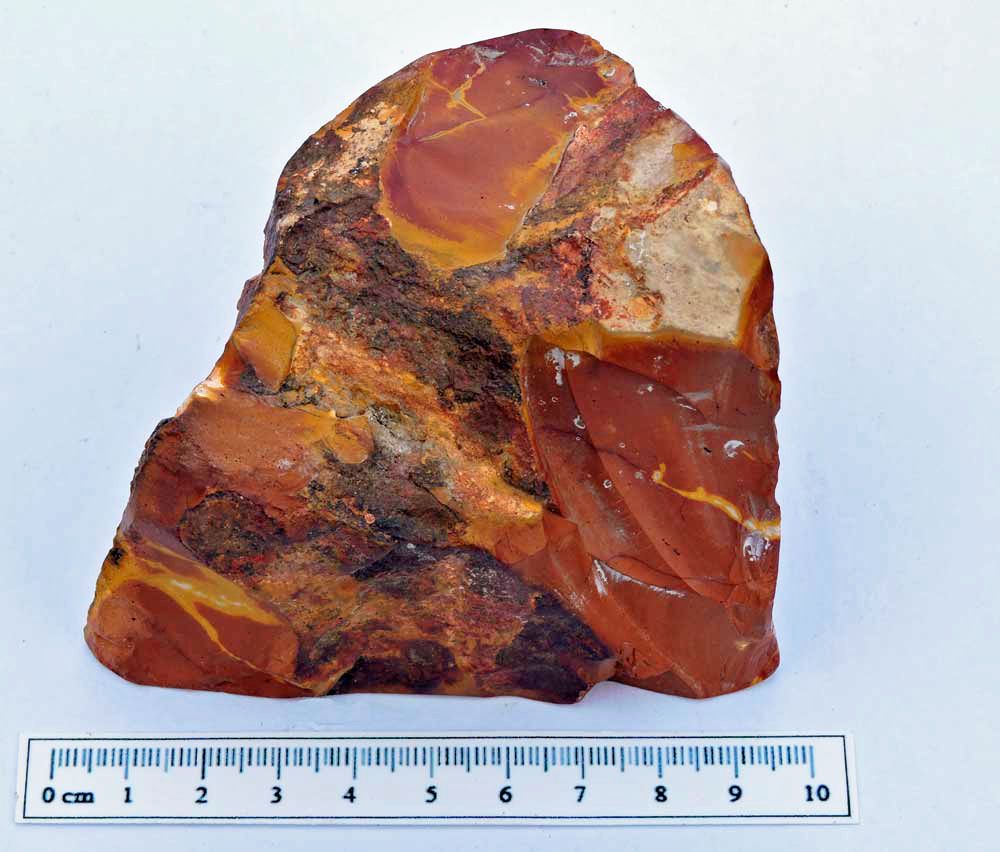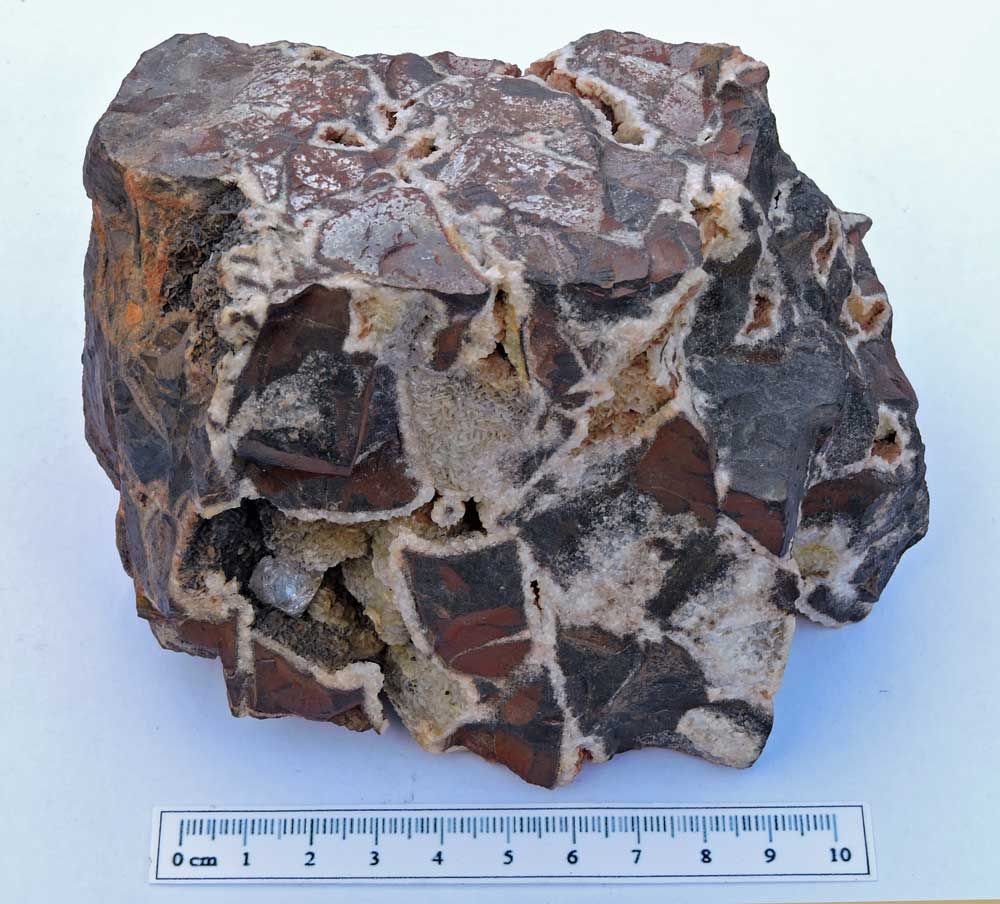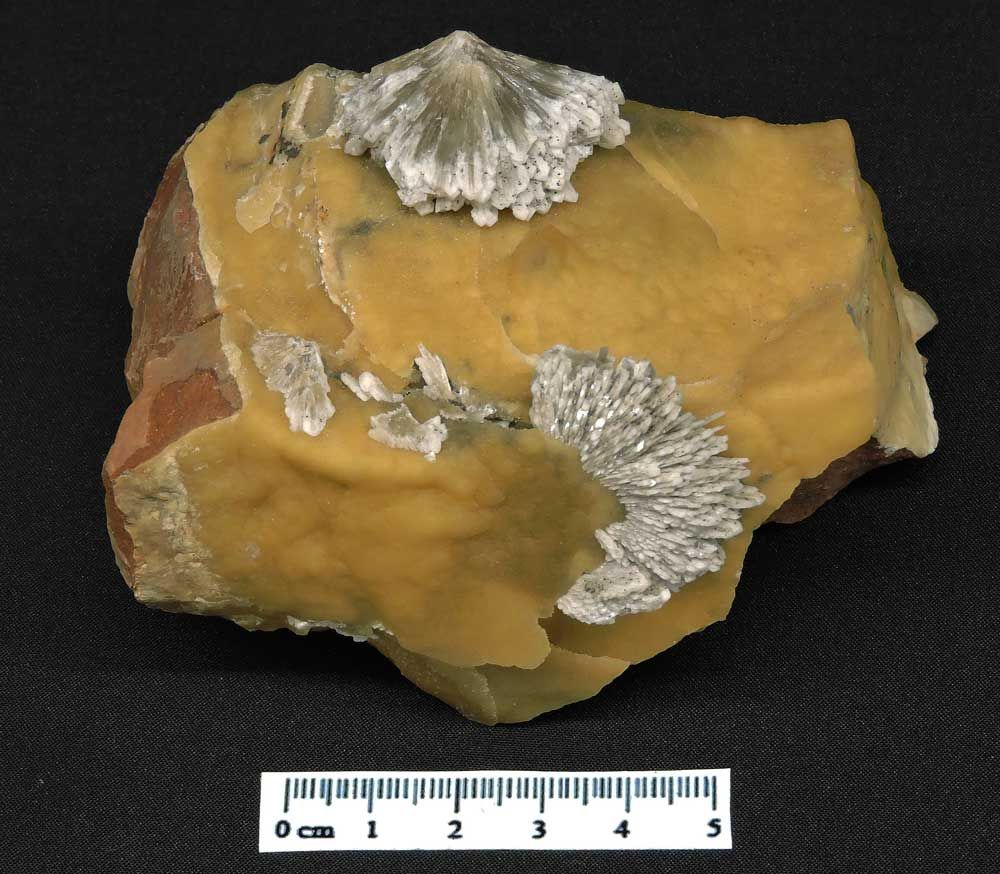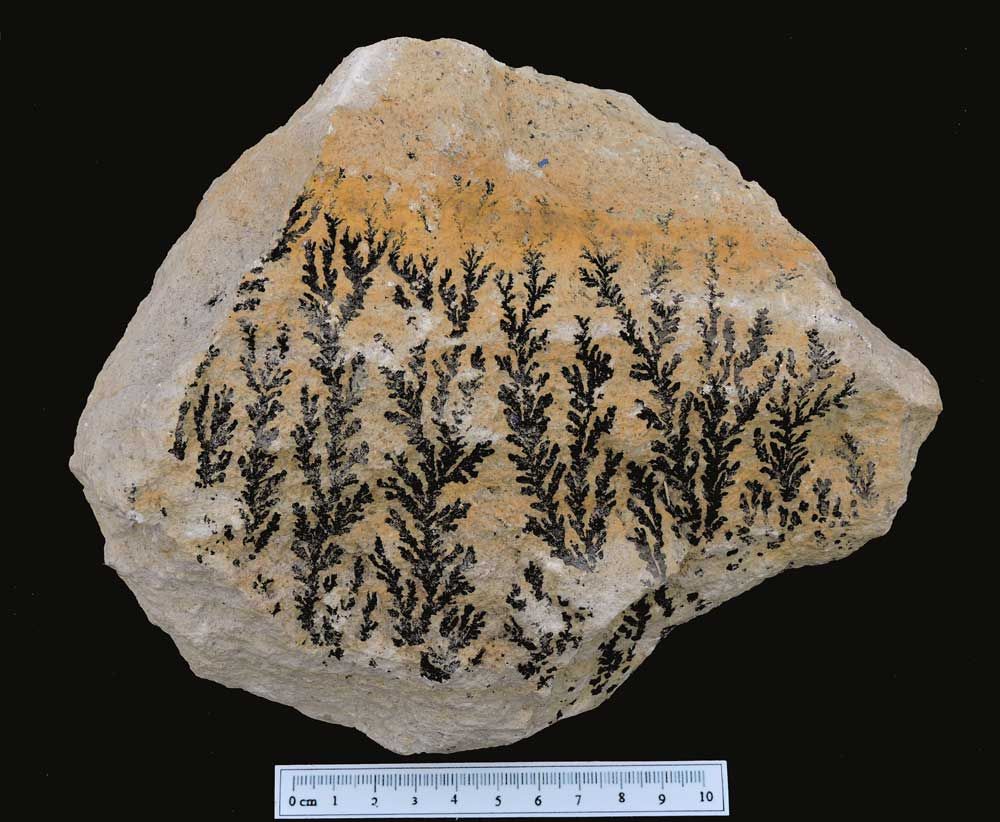
Manganese oxide, Llanymynech.
Manganese oxide, MnO2, dendritic variety. The specimen was collected from the abandoned Llanymynech limesone quarry about 20 years ago. Sometimes the manganese oxide is wrongly referred to as pyrolusite, but there are several manganese oxides, and only laboratory analysis can determine which of the oxides is present. Dendritic pyrolusite is rare, and more often than not, it is one of the other oxides. Trace elements of other minerals will determine which one.
